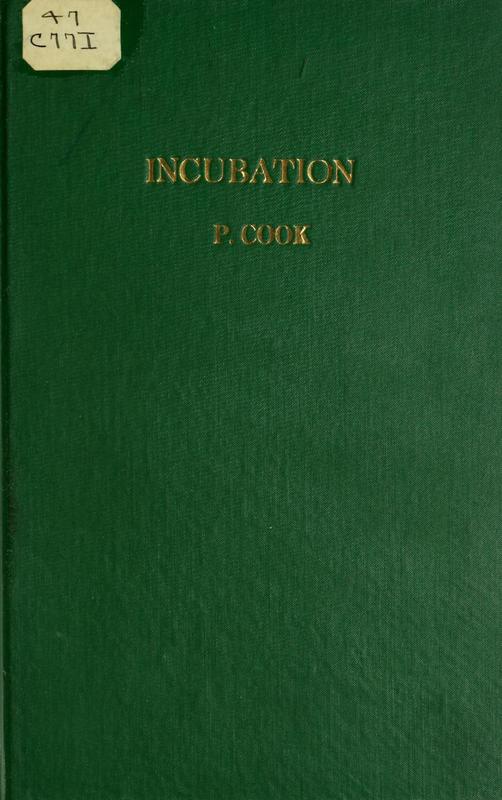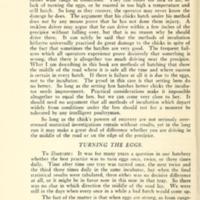Incubation: A Working Manual For Large Hatching Plants
Title
Incubation: A Working Manual For Large Hatching Plants
Creator
Date
Publisher
The Weimar Press. Alhambra, CA
Excerpt
Artificial incubation of the eggs of domestic fowls has been practised from time immemorial in both Egypt and China.
In the United States probably more patents have been taken out on incubators than on any other kind of machinery, yet, taking the country over, there are enormous losses of fertile eggs which would have produced strong and vigorous chicks had they been placed under hens. There is every reason to think that American hatches are even considerably below those of Egypt and China.
On the other hand, all hatcheries and all incubators have at times produced hatches in every respect equal to those of the setting hen. The puzzle has been why they only succeed sometimes and fail so often when apparently the treatment is the same in all cases. The trick in artificial hatching is to be able to hatch every fertile egg (not only once in a while) but every time the incubator is set. This little book is written to clear up the causes of failures, for there is no reason why artificial incubation should not be fully as reliable as natural incubation.
I have run incubators without intermission for nearly twenty years and I have had my share of failures and bitter disappointments, but for three years now our plant, holding forty thousand eggs, has been run for nine months every year without a single poor hatch and therefore I feel that in all essentials we must be on the right road. Each year during this long period I have not only conducted careful investigations, but have built from two to four different types of incubators with the hope of overcoming the frequent failures. In many cases the only result of much toil was merely to find another way which does not work. There is no end to the wrong things that can be done in a hatchery, and unfortunately there is only one right way.
It certainly has been a wearisome search to find this right way. Let us first of all try to understand why research work in a hatchery or a poultry plant so seldom leads to positive results.
In the United States probably more patents have been taken out on incubators than on any other kind of machinery, yet, taking the country over, there are enormous losses of fertile eggs which would have produced strong and vigorous chicks had they been placed under hens. There is every reason to think that American hatches are even considerably below those of Egypt and China.
On the other hand, all hatcheries and all incubators have at times produced hatches in every respect equal to those of the setting hen. The puzzle has been why they only succeed sometimes and fail so often when apparently the treatment is the same in all cases. The trick in artificial hatching is to be able to hatch every fertile egg (not only once in a while) but every time the incubator is set. This little book is written to clear up the causes of failures, for there is no reason why artificial incubation should not be fully as reliable as natural incubation.
I have run incubators without intermission for nearly twenty years and I have had my share of failures and bitter disappointments, but for three years now our plant, holding forty thousand eggs, has been run for nine months every year without a single poor hatch and therefore I feel that in all essentials we must be on the right road. Each year during this long period I have not only conducted careful investigations, but have built from two to four different types of incubators with the hope of overcoming the frequent failures. In many cases the only result of much toil was merely to find another way which does not work. There is no end to the wrong things that can be done in a hatchery, and unfortunately there is only one right way.
It certainly has been a wearisome search to find this right way. Let us first of all try to understand why research work in a hatchery or a poultry plant so seldom leads to positive results.
Type
Collection
File(s)
Incubation.jpg
(image/jpeg)
 An official website of the United States government.
An official website of the United States government.




